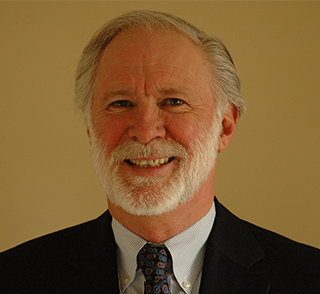
Dr. Wayne Goodfellow is an emeritus research scientist, Geological Survey of Canada. His research interests include the genesis of modern and ancient seafloor hydrothermal sulfide deposits (Sedex, VMS), anoxic oceans and the sulphur cycle, and deeply penetrating geochemical exploration methods. He has authored over 150 refereed journal papers and was editor of the Mineral Deposits of Canada volume published by the GAC in 2007, Sediment-hosted Lead-Zinc Sulphide Deposits (2004), and Economic Geology Monograph 11 on VMS deposits of the Bathurst Mining Camp (2003).
Dr. Goodfellow was the leader of the GSC’s EXTECH-II multidisciplinary project on VMS deposits and the Deep Search/TGI3 project on the development of new methods of detecting deeply buried mineral deposits. As adjunct professor at the University of Ottawa, he has supervised 10 Ph.D. and M.Sc. graduate students, and 9 postdoctoral fellows. He is a recipient of the Duncan Derry Medal, the highest award of the GAC in the area of economic geology.
Distinguished Lecturer 2012-13
Lecture Abstract
Sedimentary-Exhalative (SEDEX) Deposits – Current Concepts on their Geology, Genesis and Exploration
SEDEX deposits are an important global resource of Zn, Pb and Ag. They occur in a variety of cratonic rifts with an architecture consisting of a syn-rift clastic sequence overlain by post-rift basinal sediments. Most deposits are hosted by marine organic-rich shale and chert. SEDEX deposits formed during several major episodes from the Paleoproterozoic to the Cretaceous when the oceans were stratified with a lower reduced water column.
This lecture will consider two major types of SEDEX deposits: vent-proximal deposits that occur along synsedimentary faults and vent-distal deposits formed in bathymetric depressions on the ancient seafloor. It will also tackle SEDEX genetic models that involve hydrothermal fluid circulation driven by a geothermal gradient in hydrothermal reservoirs sealed by overlying impervious sediment. Ore fluid discharge at the seafloor occurred along reactivated, deeply penetrating extensional faults that provided a fundamental control on the siting of ore deposits. The precipitation of sulfides at the seafloor was controlled by the mixing of metals in hydrothermal plumes or brine pools with an ambient sulfidic water column. The talk will also consider geochemical vectors that are most effective in locating deposits at depth in sedimentary basins at both the district and deposit scale.
 - dev.png)

